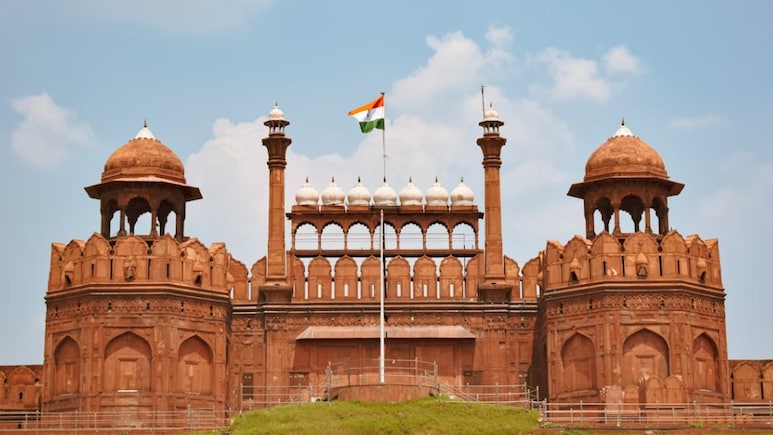
- Delhi's Red Fort walls are turning black due to toxic air pollution causing black crusts
- Black crusts contain pollutants like gypsum, quartz, and heavy metals from traffic and industry
- Study from 2021-2023 shows pollution is chemically corroding the fort's red sandstone
Delhi's iconic 17th-century Red Fort is facing a serious threat from Delhi's toxic air pollution, causing its iconic red sandstone walls to turn black. This phenomenon is due to the formation of 'black crusts' composed of pollutants like gypsum, quartz, and heavy metals such as lead, copper, and zinc, derived from traffic emissions, industrial pollution, and construction dust. An extensive study, conducted by an Indo-Italian team of scientists, found that these black crusts are not only discolouring the fort but also weakening its structural integrity.
What's Causing the Black Crusts?
Researchers from India and Italy conducted the first in-depth analysis of pollution's impact on the Red Fort from 2021 to 2023. Their findings, published in June 2025 in the journal Heritage, reveal how Delhi's air is chemically corroding the red monument. The team conducted the study by scraping samples from the walls and cross-referenced them with local air quality data.
Researchers discovered black crusts forming on the Red Fort's stone surfaces due to particulate matter accumulation, causing discolouration and exfoliation. The crusts, measuring 55-500 µm thick, contain gypsum, bassanite, and weddellite, indicating external sources of calcium, likely from pollution.
The main culprits behind this damage are:
- Construction and Industrial Activities: Pollution from construction work, road dust, and cement factories is contributing to the problem.
- Vehicular Emissions: Vehicle traffic and wear from roads and vehicles are releasing heavy metals like Titanium, Vanadium, Chromium, Manganese, Nickel, Copper, Zinc, Barium, and Lead into the air.
- Fossil Fuel Burning: The burning of fossil fuels is also adding to the pollution, further deteriorating the fort's condition.
These crusts could damage the intricate carvings on the walls if no action is taken. The study also warns that without action, other Delhi heritage sites like Humayun's Tomb could follow suit.
Solutions on the Horizon?
To conserve the Red Fort, practical steps can be taken despite the challenges of reducing air pollutants in Delhi. The black crust formation can be minimised by removing thin black layers or deposits in the early stages without damaging the stone, the study notes.
Implementing a maintenance cleaning program for high-risk areas and applying stone protectives can also prevent or slow down the crust formation, helping preserve the fort's integrity.
"The formation of a black crust is a progressive phenomenon that usually begins with a thin black layer or deposit, which can be removed without significantly damaging the stone's integrity, at least in the early stages. In addition, a maintenance cleaning program for the most affected areas and the application of stone protectives could prevent or at least slow down the formation of a black crust," reads the study.
Track Latest News Live on NDTV.com and get news updates from India and around the world

